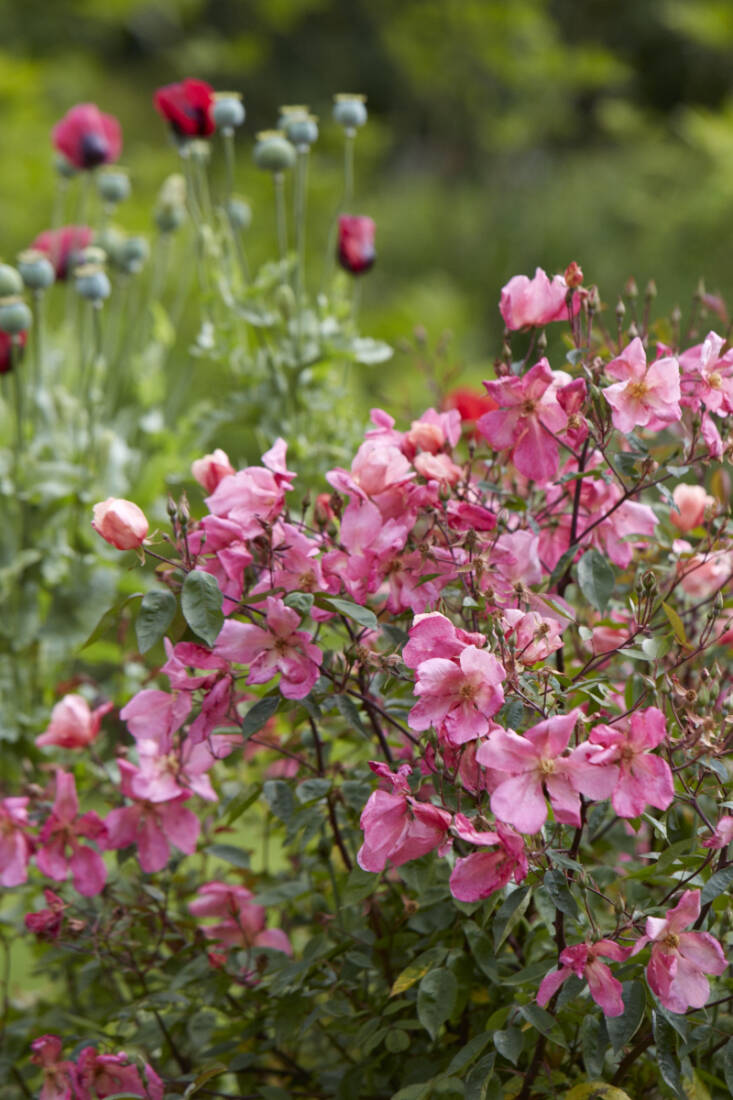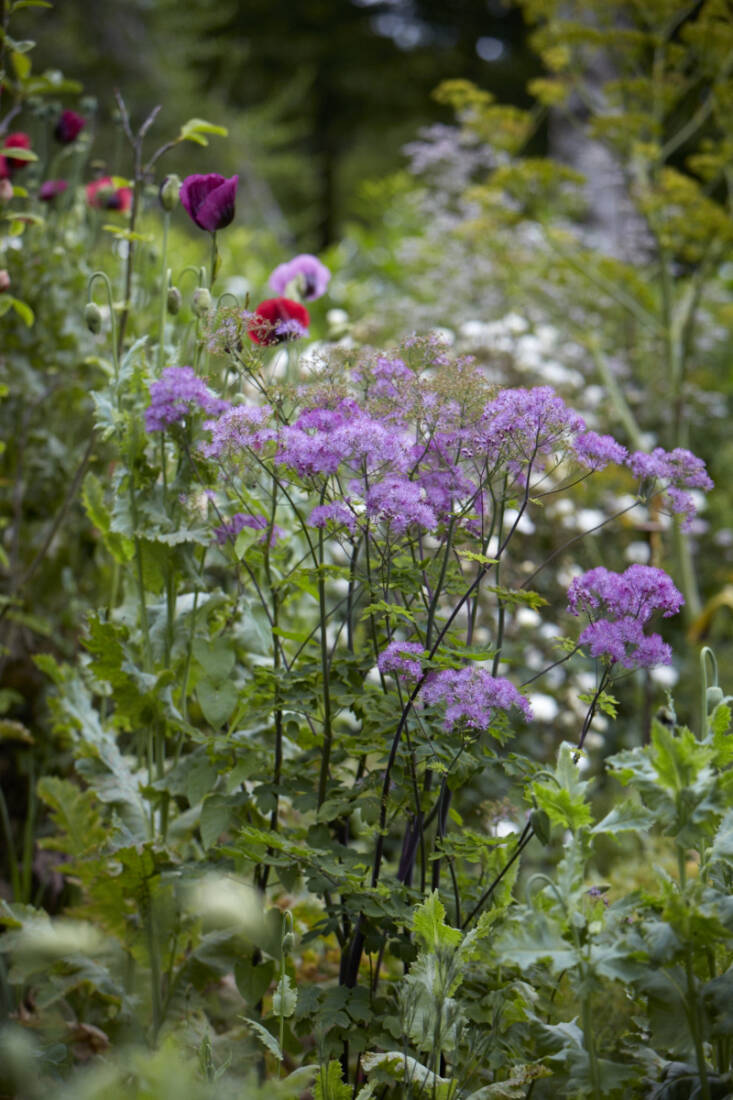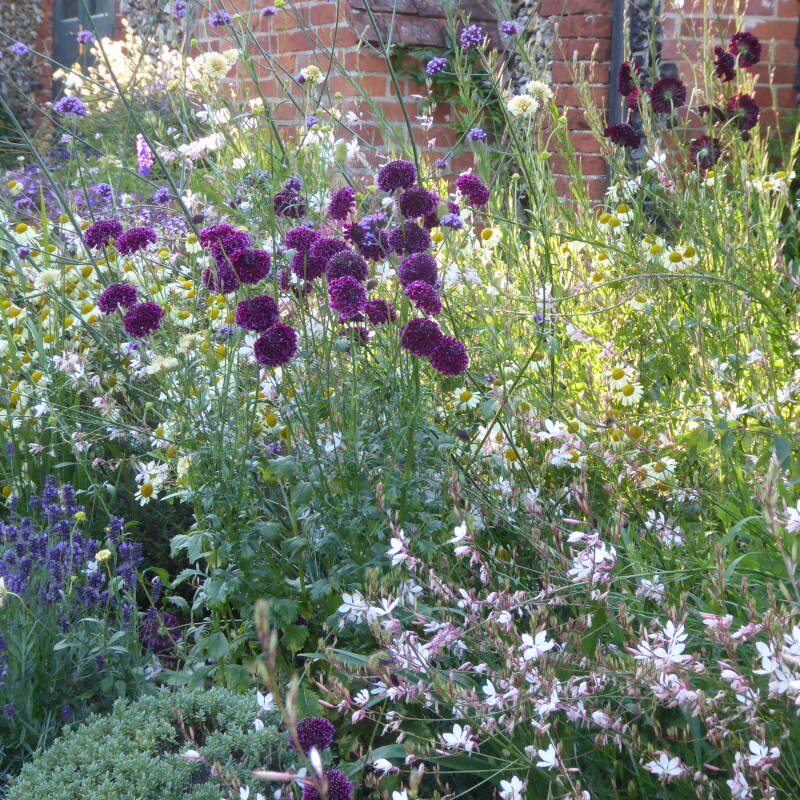Color in a garden can cause angst, aided by fears of errors in taste. And yet, we know deep down that color is good for us. “Color makes people feel alive,” says leading British garden designer James Alexander-Sinclair. For clients, he treads a fine line, creating gardens that are elegant—but not spare when it comes to “zing.” His own garden in Oxfordshire reveals a light touch and an absence of inhibition: “A garden should be happy and not overthought, and slightly instinctive.”
Let’s take a closer look.
Photography by Britt Willoughby Dyer.

Shying away from color is an avoidance of vitality. “I like zing,” says James. “People are scared of that sort of thing sometimes, and they shouldn’t be.” In the end, what is there to lose? James’ attitude to color is reflected in his approach to designing his own garden: “I look at it quite often and think, shall we stick another bed in here, or do another bit there?” he muses. It’s a slow and enjoyable progression for someone who reminds clients (and audiences on his many speaking engagements) that a garden is never finished.

Opium poppies, in shades of amethyst and plum, are a key flower for James and his family, to the extent that he and his children have been tattooed with them; the younger generation in bud and bloom, while he sports a desiccated seed head (on his arm, if you’re wondering). Celestria, James’ wife, focuses on seeds, selecting only the best poppy colors for sowing next year. A key to the Alexander-Sinclair color style is that a chosen color has vibrancy: any washed out, knicker-pink poppy has no chance. This approach can be applied to self-sown columbines and hellebores whose distinct markings are easily muddied from cross-pollination.

Rosa x odorata ‘Mutabilis’ is a favorite because it flowers “forever” and makes quite a splash, showing orange and pink on one shrub, with the petals mutating in color as they age (buds are crimson). Referring to combinations in general, James says: “We like a bit of pink and orange together… Color changes as the season goes on as it should do, and a good combination just wakes you up; it has a sense of zip to it.” The stems of Rosa ‘Mutabilis’ are dark red, with plenty of mid-green foliage.

When working with color in mind, consider other elements besides petals: foliage, sepals and tepals, stamens and stems. Dark stems can bring harmony to a composition of darks and lights and seemingly incongruous colors.

Bright mauve or candy pink are pulled up by more obviously graceful colors such as deep red and ivory. Received wisdom says that white can cause havoc in a scheme of harmonious colors but if you are looking at shades of off-white, the result is enlivening rather than jarring.

Pale colors are chosen for their exquisite glow; see also Digitalis lutea with Papaver somniferum (second picture).

James is attracted to unusual plants, which he mixes up with superior versions of common wildflowers (such as selected Papaver somniferum). And green, in all its shades and textures, goes with everything. At specialist plant nurseries, he will ask to be shown things that he has never seen before, slowly collecting the most unusual varieties of philadelphus, magnolia and eryngium, rather than opting for the most reliable performers.

Walking around the garden, I ask whether James has mapped any of it in terms of color. He insists that the sense of flow has come about randomly. Waving at different areas, he explains: “I know that the gaura is going to flower for a long time and it’s going to go with most things; it’s definitely going to work with that aster, and the blue is going to work with the yellow, and the yellow will link nicely back with the blue that comes back into the orange, and then a patch of white, and then a shock with the pink rose and purple salvia together.” The garden is animated by brightness.

Annuals and biennials in colors of their own choosing have sown themselves in a difficult area; this is much easier than coaxing unwilling plants. “There’s a very troublesome bit where that enormous ball is: very little grows under the birch trees. It’s too dry and too full of roots, so we decided that what we needed was a distraction.” The ball was rolled into place.

Hard surfaces have been handled with élan; a floating staircase is anchored in place by invisible “table legs” with an evolving chorus of plants growing on either side of the asymmetrical horizontals. James and Celestria are happy to keep other areas green until an idea strikes.
For more English gardens, see:
- Garden Visit: A Wildflower Meadow at the Edge of an English Cottage Garden
- Secret Garden: A Lush Walled Haven Behind a 1640s Georgian House in England
- 10 Ideas to Steal from English Cottage Gardens








Have a Question or Comment About This Post?
Join the conversation